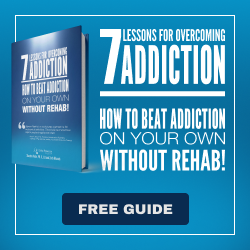Studies Show that Drinking Problems Are Increasing. Here’s Why.
And are we simply barking up the wrong tree in response to our current failures?
The United States has been conducting massive national surveys of 35-40,000 plus Americans’ drinking every 10 years with names like NLAES and NESARC. NESARC I was conducted in 2001-2002, and NESARC III in 2012-2013.
NESARC III results have just been released, and the news is bad. Both past-year prevalence of alcohol use disorders and lifetime prevalence have increased significantly. And these AUDs are associated with greater disability in people’s lives. So, we disregard them at our peril.
However, the lesson we seem to be taking from this increase is to do more of what we’ve been doing – that is, telling people how dangerous alcohol is and treating them for the disease of alcoholism. This approach is actually doubling down on the very sources of the problem.
Let me explain. But first, some technical background. NESARC III used the new psychiatric diagnostic tool, DSM-5. The DSM-5 did away with DSM-IV’s categories of alcohol abuse and alcohol dependence in favor of designating mild, moderate, and severe alcohol use disorders (AUDs).
Confronted with the word “mild”, many critics assumed that any increase in AUD diagnoses is due to the inclusion of milder drinking problems in DSM-5.
Not so. NESARC III, using DSM-5, came up with past-year AUD prevalence among adults 18 years and older in 2012-2013 of 14%, or 32.5 million Americans. Lifetime AUD prevalence was just below 30%, or 68.5 million people. In 2001-2002, using DSM-IV, these AUD figures were 8.5% (past-year) and 30% (lifetime).
So how do we know that it wasn’t the switch to DSM-5 that inflated these past-year figures? Because using DSM-IV criteria for the same data still drives the NESARC III figures up to 13% and 44% respectively. Nearly half of Americans have had an AUD, of some degree, in their lives according to the DSM-IV criteria!
There is good news. The reason lifetime prevalence is so much greater than past-year is because most people overcome their AUDs with age, despite the fact that only a fifth of people with an AUD receive any sort of alcohol treatment. Of those 18-29, 27% had a past-year AUD. Of those 30-44, 16% had one. Of those 45-64, 10% had one. Of those 65 and older (my age), 2% did.
But having ever had an AUD is bad for you, and is associated with co-morbid mental health problems and disability. So it’s simply not good for people to undergo that experience. Now, why is it that they do so? And what should we do about it?
Stanton Peele’s Life Process Program for treating addiction is available online. Try it for FREE with a 14 day trial:
The NESARC research is conducted by the National Institute on Alcohol Abuse and Alcoholism. Here’s what the NIAAA thinks we should learn from it: “The NESARC-III data indicate an urgent need to educate the public and policy-makers about AUD and its treatment alternatives, to de-stigmatize the disorder, and to encourage those who cannot reduce their alcohol consumption on their own, despite substantial harm to themselves and others, to seek treatment.”
In other words, we need to do more of what we’ve been doing in promoting an awareness of how bad alcohol is for you and how drinking problems represent a disease that requires that you go to AA or receive alcoholism treatment, nearly always 12 step and disease-orientated in the United States. But isn’t that what we’ve been telling people for decades, and certainly over the 10 years between NESARC I and III?
Meanwhile, people increased their drinking in that period, and especially young people, while handling what drinking they did more poorly. What’s the matter with them? Don’t they know that alcohol is bad for them? Or do they actually hold that belief too strongly, and more readily lose control and drink excessively?
I have been tracking cross-cultural findings on drinking for some time. At the same time as NESARC I appeared – which, like NESARC III, showed that most people overcome AUDs (including alcohol dependence) with age and without being treated – the results of the European Comparative Alcohol Study (ECAS) were being completed. ECAS, like NESARC I, refuted alcoholism-as-disease notions. I summarized these results as follows:
The results of ECAS were stunning. While some empiricists had expressed skepticism about the great differences in styles of drinking that are often noted between, say, Oslo and Florence, London and Athens, ECAS thoroughly supported – with datat – that alcohol-related problems were lowest in Southern Europe and highest in the North, despite the much greater controls the latter imposed and the lower drinking ages and far greater consumption in the former. Even more surprising was that ECAS found alcohol-related mortality was substantially higher in Northern than Southern Europe: 18 versus 3 such deaths per 100,000 for me, 3 versus 0.5 for women. There was an inverse relationship between alcohol consumption and alcohol-related mortality.
How is it possible that people drink more in Southern Europe and have fewer problems and deaths as a result? This is due principally to the tendency in Temperance cultures (that is, Nordic and English-speaking countries) to drink in heavy bursts, rather than regularly, but moderately. This leads to more accidents, violence, and suicide, and perhaps even to cirrhosis in Finland, Norway, Sweden – which consumer the least alcohol – than in France, Italy, Portugal, Spain, Greece – that consume the most. And this is due, in turn, to the tendency for Northern European and English-speaking (Temperance) cultures to view alcohol as an evil force that overcomes people’s ability to control themselves. This is the basis for the disease view of alcoholism and all addiction.
So, we can yell louder at kids that alcohol is bad and uncontrollable and causes a brain disease, as we’ve been doing for the last decade and more, as well as pushing more people into AA and other disease-orientated treatment. We’re good at doing that. Shall we just keep pressing on in the same direction?
Or is it possible we’re thinking about the problem incorrectly and that our traditionally embedded, ineradicable conceptions – which we are actually doubling down on – are the causes of our addiction orgy?
It would take too much space for me to present an entirely different conception of substance use and addiction here, which I have done in the past for The Fix and will do in the future. But let me outline the ideas on which this approach is built:
Substances like alcohol can be used in better or worse, in healthy or harmful, ways
Addictions of all sorts result from people’s overall life structure, including whether or not they are productive and have positive communities.
Addictions are not brain diseases that remove all possibility of choice for people and that obliterate the values that people hold.
Substance use has always been and will always be a part of our lives, so that we need some skills with which to manage it and confidence that we can do so.
Or we can simply do more of what we’ve been doing. What does AA tell us to expect if we keep doing the same thing?
Article by Stanton Peele for thefix.com
Stanton Peele’s Life Process Program for treating addiction is available online. Try it for FREE with a 14 day trial:






